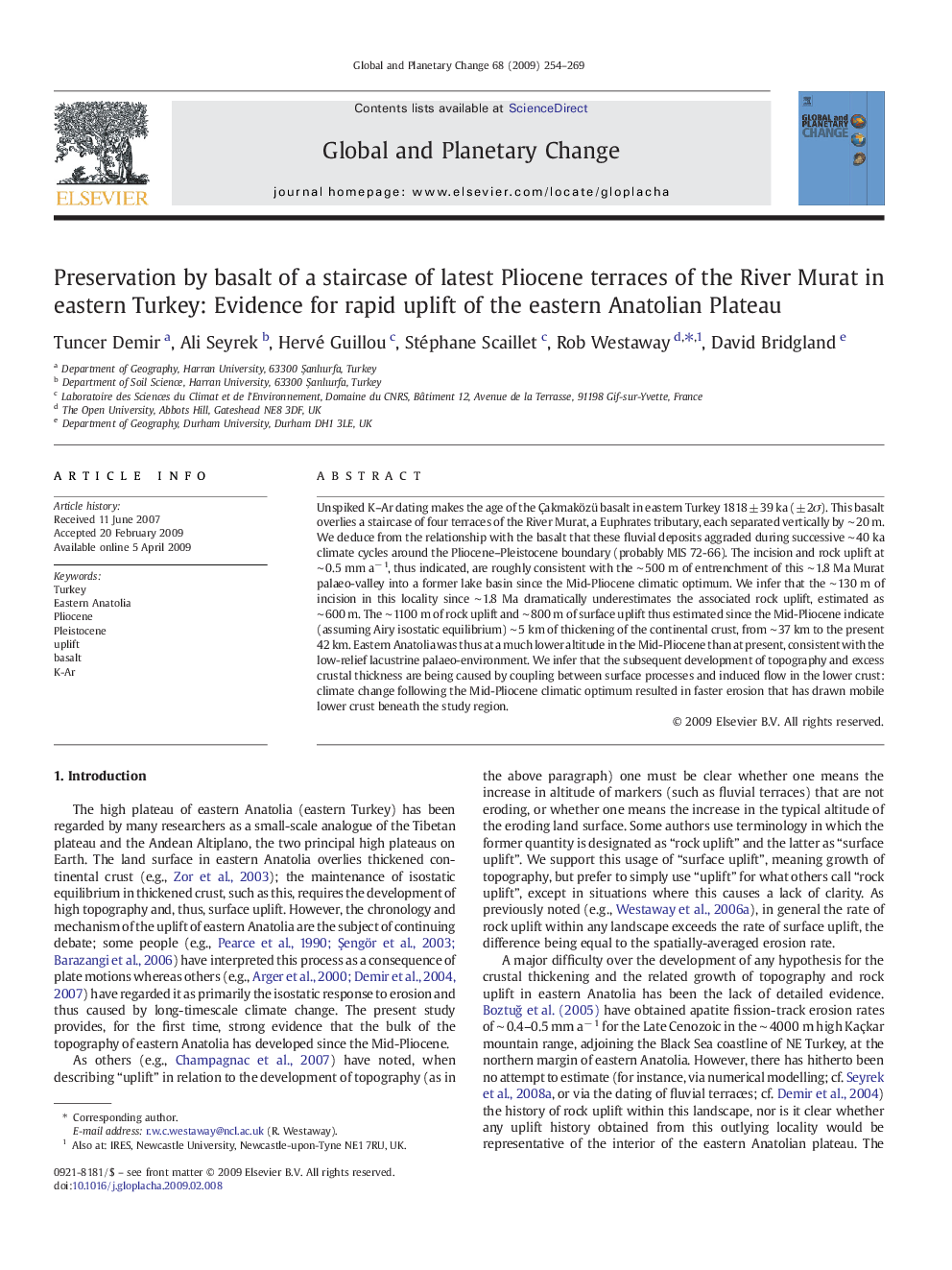| Article ID | Journal | Published Year | Pages | File Type |
|---|---|---|---|---|
| 4464117 | Global and Planetary Change | 2009 | 16 Pages |
Unspiked K–Ar dating makes the age of the Çakmaközü basalt in eastern Turkey 1818 ± 39 ka (± 2σ). This basalt overlies a staircase of four terraces of the River Murat, a Euphrates tributary, each separated vertically by ∼ 20 m. We deduce from the relationship with the basalt that these fluvial deposits aggraded during successive ∼ 40 ka climate cycles around the Pliocene–Pleistocene boundary (probably MIS 72-66). The incision and rock uplift at ∼ 0.5 mm a− 1, thus indicated, are roughly consistent with the ∼ 500 m of entrenchment of this ∼ 1.8 Ma Murat palaeo-valley into a former lake basin since the Mid-Pliocene climatic optimum. We infer that the ∼ 130 m of incision in this locality since ∼ 1.8 Ma dramatically underestimates the associated rock uplift, estimated as ∼ 600 m. The ∼ 1100 m of rock uplift and ∼ 800 m of surface uplift thus estimated since the Mid-Pliocene indicate (assuming Airy isostatic equilibrium) ∼ 5 km of thickening of the continental crust, from ∼ 37 km to the present 42 km. Eastern Anatolia was thus at a much lower altitude in the Mid-Pliocene than at present, consistent with the low-relief lacustrine palaeo-environment. We infer that the subsequent development of topography and excess crustal thickness are being caused by coupling between surface processes and induced flow in the lower crust: climate change following the Mid-Pliocene climatic optimum resulted in faster erosion that has drawn mobile lower crust beneath the study region.
